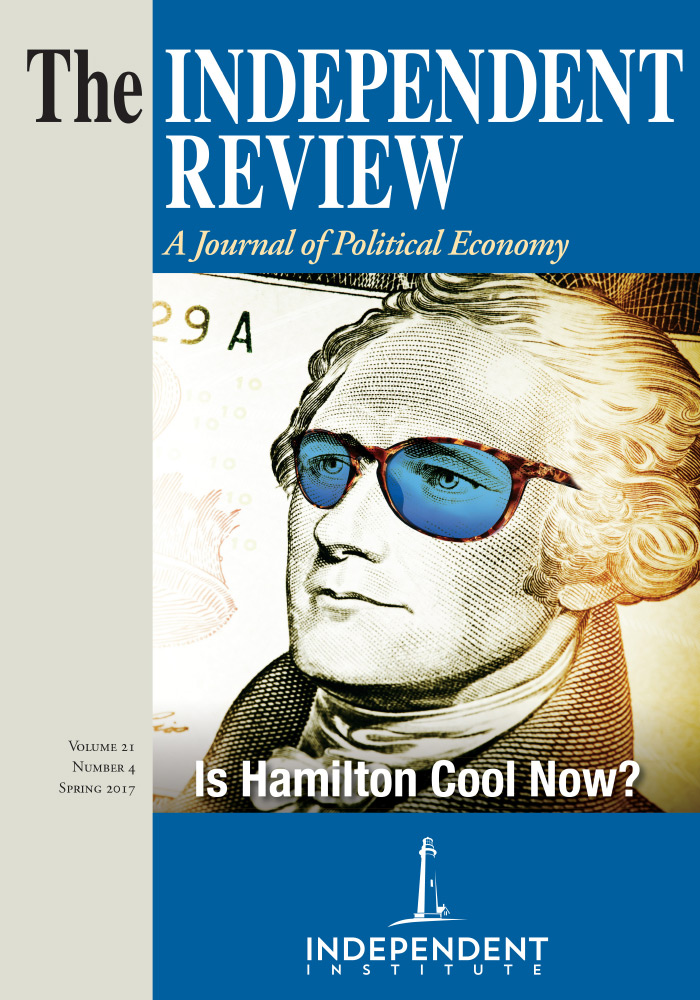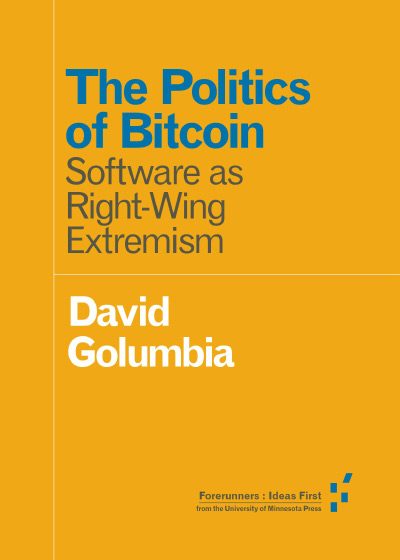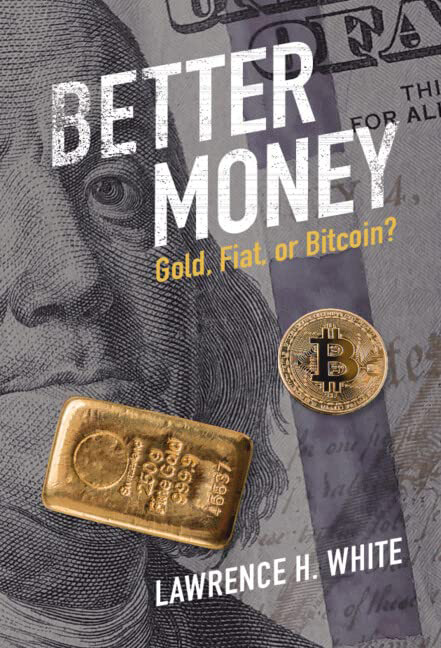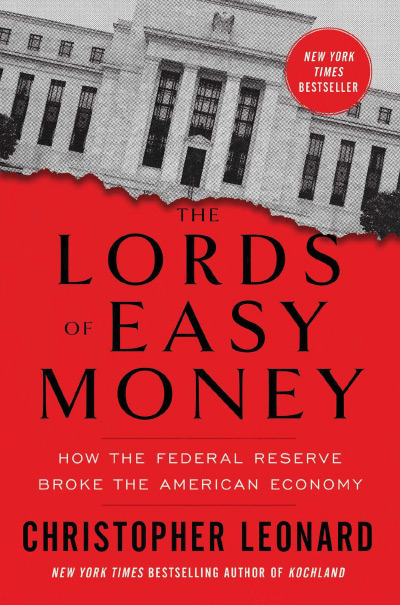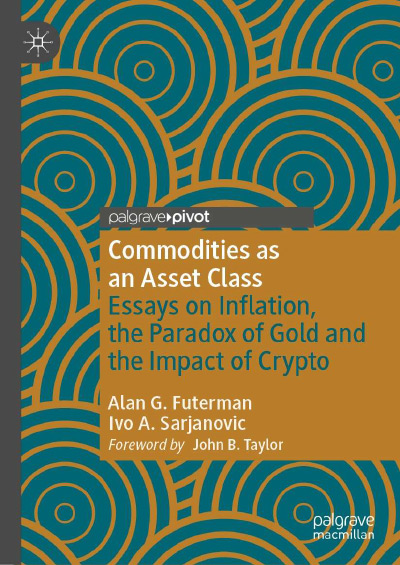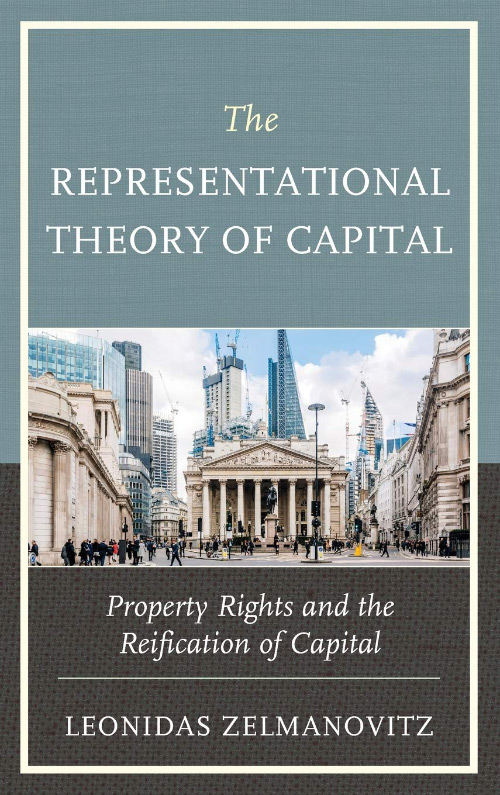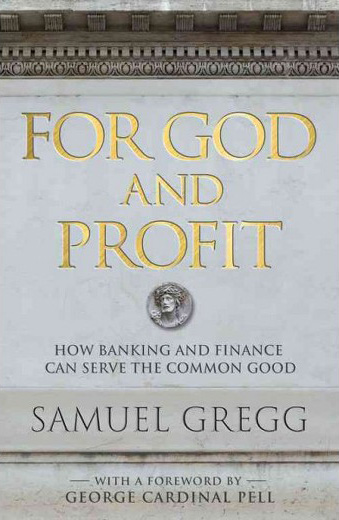People often need to do things in groups, to cooperate, but they face problems of both information—what things are possible?—and incentives—why do those things? The structures that affect the ability of groups to solve these problems are called “institutions.” A number of scholars, most notably Elinor Ostrom, traveled the world like modern-day Darwins, cataloging and explaining the institutional equivalents of “strange-beaked finches.”
An overly simple dichotomy is often drawn, dividing institutions based on force (“states”) and institutions that rely on voluntary action (“markets”). But the threat of force may be crucial to support markets and property rights; likewise, political activities are voluntary, even communal. Regardless of how we classify them, institutions reduce the transactions costs of identifying and capturing gains from groups of humans cooperating.
One version of the argument for markets goes like this: if two or more people can organize an exchange or activity, and they do so voluntarily, it must be true that all participants anticipate being (subjectively) benefitted. Consequently, there should be a strong presumption in favor of autonomy: the state should not interfere with the agreements made by citizens. In fact, the state’s charter is to reduce the transactions costs of autonomous exchange, whatever it is people chose to exchange.
One kind of institution, one that has often (though not always) been a “state” institution, is a currency and system for clearing transactions. The gains from each individual transaction or exchange may be quite small, but the aggregate consequences can be enormous. For this reason, even incremental reductions in transactions costs can spur substantial gains in economic well-being for societies, even for advanced societies.
But some changes are not incremental, and turn out to be quite disruptive. One new technological institution, the cryptocurrency “Bitcoin,” has the potential to be that sort of institution. It’s too soon to tell, but it’s an interesting possibility.
The reason for this long initial throat-clearing is to establish some foundation for the review of David Golumbia’s book, The Politics of Bitcoin. The subtitle reveals the book’s perspective: “Software as Right-Wing Extremism.” Golumbia’s earlier work, The Cultural Logic of Computation, in 2009, discussed the growing culture of what he called “computationalism.” This he defines as “the presumption that computer-based expertise trumps that of all other forms of expertise, sometimes because everything in the world is ultimately reducible to computational processes.” (p. 22). It’s an interesting thesis and the 2009 book is well done.
But that was a different book. The Politics of Bitcoin is a dumpster fire. I will limit myself to three observations, regarding respectively the thesis, the evidence, and the tone.
Thesis:
The book claims that “right-wing extremist” ideas that have done great harm to (Golumbia’s conception of) society. There exists—in the words of “trenchant critic” (p. 7) Philip Mirowski—a “Neoliberal Thought Collective” (NTC). The NTC comprises conspirators ranging from the Chicago Economics School, the “nearly identical” Mont Pelerin Society, Julian Assange, Ronald Reagan, Milton Friedman, Ayn Rand, Friedrich Hayek, and Mark Levin (really, Mark Levin; Golumbia quotes him at some length), to Murray Rothbard and Margaret Thatcher.
Golumbia claims that the goal of the NTC is to destroy all government and achieve worldwide anarcho-capitalism. This insidious cabal enters the debate through the innocuous claim that “government should not regulate the internet,” the core claim of “cyberlibertarianism.” The problem is that (as the NTC knows full well) that government will cease to exist if it cannot control the currency. Thus, Bitcoin is a kind of Trojan Horse, and cyberlibertarians who would not accept the claims of broader political libertarianism are (at best) duped to be the agents of the destruction of society.
The reason that secrecy, or at least duplicity, is needed is that these ideas—distrust of the state, a desire for a stable currency, and a focus on decentralized social structures—are so extreme that any person, group, or system that takes them seriously will be tainted. But many cyberlibertarians, who may be otherwise sensible (meaning, not “real” libertarians) who work on Bitcoin don’t recognize the provenance of the idea. Golumbia’s clarion call is thus a warning to the rest of us: the fruit of the poisonous tree must also be poisonous! As he puts it: “A set of slogans and beliefs associated with the spread of a digital technology incorporate critical parts of a right-wing worldview even as they manifest a surface rhetorical commitment to values that do not appear to come from the right” (p. 4).
That’s why nearly all of the references to “subversive” ideas of neoliberalism come from the 1990s, or earlier. The logic of Golumbia’s argument is therefore that a premise used to justify free markets and to question the value of regulation must always support “right-wing extremism,” even if the person making the argument reaches an (apparently) different conclusion. The founders and proponents of Bitcoin have either been duped by these poisonous ideas, or they are trying to dupe the rest of us by disguising their right-wing extremist origins. Much of the text of the book is devoted to documenting the similarities in assumptions about regulations, as if this were sufficient for the argument to work.
In Golumbia’s world, this means that it is sufficient to establish that something was once thought by someone he disagrees with, and any friend of his enemy must likewise be his enemy. You can’t be too careful with the freedom to have or to use ideas. By this logic, of course, we should outlaw vegetarianism; perhaps it should even be a capital crime. It is easy to document that Hitler was a vegetarian, after all.
Evidence:
One gets the impression that the author sees “right-wing extremists” as Bond villains: depraved geniuses, but with a cartoonish two-dimensional lack of character. Only in rare instances does Golumbia quote or even paraphrase the “right-wing extremists” he critiques. There are exceptions, as in the passages where Golumbia cherry-picks the comments sections for trolls who support his caricatured view of cyberlibertarian thinkers; these trolls are carefully quoted verbatim (pp. 41-42). But as far as the views of the actual thinkers themselves, all we learn is through Golumbia’s utterly credulous recitations of critics. And what critics? Never scholarly arguments, never quotations from actual journal articles. Instead, Golumbia relies on deservedly obscure works, many of which are not even published.
For example, we are told of an article (Dyson, et al., “Cyberspace and the American Dream, 1994, Future Insight) in which “A Magna Carta for the Knowledge Age” is advanced. But we are not given quotations, or even a real summary, of the offending article. Rather, Golumbia quotes an acroamatic screed (Langdon Winner, “Cyberlibertarian Myths,” ACM SIGCAS: Computers and Society, 27, pp. 14-19). Golumbia cites Winner, paraphrasing Dyson, et al., instead of quoting Dyson, et al. Winner doesn’t actually tell us much about the “Magna Carta;” instead, we learn:
Characteristic of this way of thinking is a tendency to conflate the activities of freedom-seeking individuals with the operations of enormous, profit-seeking business firms. In the [Magna Carta] concepts of rights, freedoms, access, and ownership justified as appropriate to individuals are marshaled to support the machinations of enormous transnational firms (p. 5).
And that’s pretty much it. That’s the argument: these arguments for individuals really just protect “enormous” corporations from regulation. The method? Go find instances where the evil Bond-villain “extremists” used the word “freedom.” Then, find instances where Bitcoin enthusiasts also use the word “freedom.” Therefore, it is established that Bitcoin is a tool of the NTC.
The problem is that there is in fact little agreement among the constituents of the supposed NTC. Friedrich Hayek never had a position in the Chicago Economics department; he was in the Committee on Social Thought. Julian Assange and Margaret Thatcher would likely get into a fistfight (ol’ Maggie would win, by the way). Ayn Rand and Murray Rothbard did fight; hated each other. And, perhaps most importantly, Milton Friedman was entirely persuaded (James Pethokoukis “Rand Paul is Dead Wrong about Milton Friedman,” The Guardian, 2013) of the need for a centrally managed fiat currency, at least over the period in which the NTC allegedly formed.
Tone:
I think a single example here will suffice (I could quote dozens, all as laughably over the top):
Few attitudes typify the mind-set of Bitcoin promoters (and many others) more than do those of “Sanjuro,” the alias of the person who created a Bitcoin “assassination market.” Sanjuro believes that by incentivizing people to kill politicians, he will destroy “all governments, everywhere.” This anarchic apocalypse “will change the world for the better,” producing a world without wars, dragnet Panopticon-style surveillance, nuclear weapons, armies, repression, money manipulation, and limits to trade (p. 75).
Really? The “assassination market” for hire typifies the attitudes of all Bitcoin enthusiasts? Advocating Bitcoin is an admission that you also advocate the murder of all public officials?
Final Words
The argument for Bitcoin, in my view, rests on two separate, and separable, premises. The first is that the value of the currency, as currency, is not easily manipulable. The process of creation, or “mining,” both ensures that the number of Bitcoins in circulation is predictable and that people (“nodes”) have sufficient incentives to police fraud, “double-spending,” and simple errors in calculation. The second is that the recording of transactions in a distributed ledger called the “blockchain” allows the leapfrogging of a variety of expensive and restrictive choke points in economic development, ranging from banks, credit card companies, attorneys, contracting and processing of escrow payments.
The first argument is a claim about the quantity of money and the value it confers to money as an abstract unit of command over goods and services. Changes in the quantity of money can have substantial consequences for fixed-income assets such as bonds or annuities, in the form of inflation (or deflation). Predictable changes in value can be contracted or insured against; unpredictable changes can cause substantial costs, up to the inability of the currency to serve as a “money” in the economy.
Golumbia bizarrely and tendentiously insists (pp. 28-29) that the fluctuations in the value of Bitcoin imply that Bitcoin is subject to inflation. In fact, there are always at least two motives for holding any asset: the desire for benefitting from access to the liquidity of the asset, and the desire for profit from holding value denominated in the units of that asset. Thus, I might hold gold, or real estate, or stock certificates, partly because I can convert them to usable liquidity if I want, but also because I might expect their value to appreciate while I hold them.
Bitcoin is immature, in terms of the density of transactions for which it is used, or for that matter can be used. Much of the value of holding Bitcoin must rest on the speculative value one anticipates from holding Bitcoin or other assets denominated in Bitcoin. This means that fluctuations in the value of “one” Bitcoin result from the dominance of the speculative demand rather than the liquidity demand. It may be true that volatility in the value of Bitcoins, because of this speculative motive for holding (or, selling), makes them a poor currency; that would at least be a logically valid critique. But one cannot infer from evidence of volatility that the (separate) claim about insulation from inflation is false. In fact, in the U.S. at least, the Internal Revenue Service has formally classified Bitcoin as being an asset, rather than a currency. Consequently, the fluctuations in value are by definition the result of volatility in speculative demand. It’s not really a currency at all, at least not yet.
Even less can one legitimately say that the origin of certain ideas by people who used those ideas in ways one detests is evidence that Bitcoin is itself tainted by those same conclusions. Golumbia disagrees; in fact, he goes so far as to claim (p. 12) that: “As they are currently configured, Bitcoin and the blockchain technology on which it rests satisfy needs that make sense only in the context of right-wing politics.” He is so bound up in left-wing American politics he fails utterly to appreciate the importance of what Bitcoin can do. Bitcoin is not terribly important in the U.S.; we already have banks, lawyers, and credit card companies to clear transactions. The importance of Bitcoin is its potential in Somalia, or other countries where basic functions of money, the clearing of transactions, wiring payments, and consummating contracts cannot be taken for granted. The reason that less regulation is required is that all the functions that current institutions carry out imperfectly, at great cost, and subject to problems of corruption can be handled seamlessly by a crypto-currency based on a blockchained ledger. The slow, tedious path toward traditional development of institutions such as rule of law and financial intermediaries can be shortened considerably. It’s not that Bitcoin destroys government; Bitcoin makes government unnecessary because it carries out the functions that, until now, only governments with considerable state capacity have been able to carry out effectively.
In short, Golumbia’s effort at discrediting Bitcoin by “showing” that it derives from “right-wing extremist” origins fails twice. He shows rather decisively that he understands neither the right-wing views he loathes, nor the Bitcoin technology he critiques. And if they are in some way connected, it is only because the underlying transactions costs problems I discussed out at outset imply many problems have a common structure, not that meetings of the NTC have decreed the end of government.
| Other Independent Review articles by Michael C. Munger | ||
| Fall 2024 | Tax Turmoil: A Dia Fenner Economic Thriller | |
| Fall 2024 | Retrieving Liberalism from Rationalist Constructivism, Volume I; Retrieving Liberalism from Rationalist Constructivism, Volume II | |
| Fall 2024 | The Dispersion of Power: A Critical Realist Theory of Democracy | |
| [View All (83)] | ||

